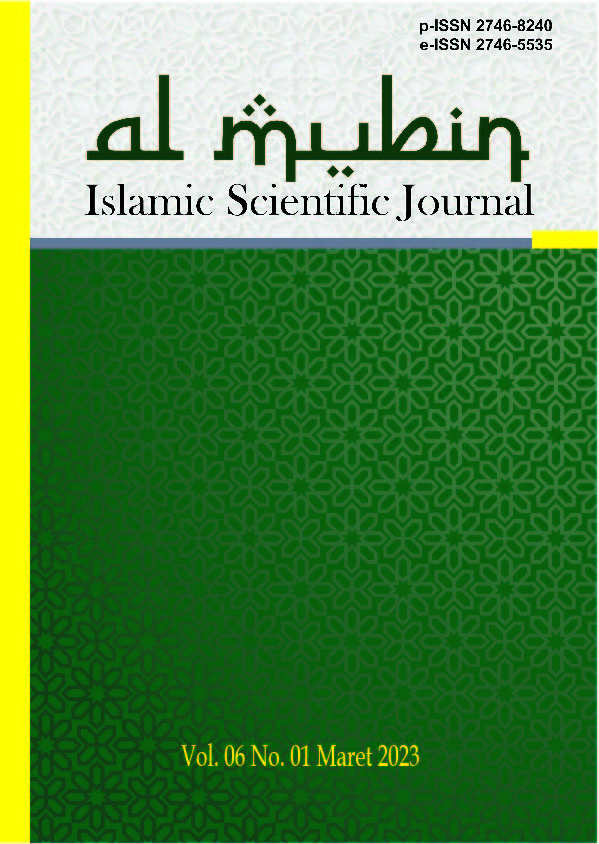PSYCOMETRIC PROPERTIES OF THE AUTHENTIC HAPPINESS SCALE (AHS) INDONESIAN VERSION WITH CONFIRMATORY FACTOR ANALYSIS AND RASCH MODEL
Isi Artikel Utama
Abstrak
Penelitian ini bertujuan untuk mengkaji sifat psikometrik skala kebahagiaan otentik (AHS) versi Indonesia, yang meliputi analisis unidimensionality dan item fit menggunakan CFA dan Rasch Model serta Validitas dan reliabilitasnya. Skala ini terdiri dari kebahagiaan yang otentik dan berfluktuasi yang terdiri dari 20 item, masing-masing sepuluh item. Skala tersebut diberikan kepada 112 orang pendidik sebagai sampel yang diambil secara purposive sampling. Pada uji unidimensionalitas CFA, sepuluh item dieliminasi untuk mendapatkan model yang fit, dan sepuluh item diuji ulang dan dianalisis menggunakan model Rasch. Hasil analisis di atas membuktikan bahwa AHS memiliki sifat psikometrik yang baik untuk digunakan dalam versi bahasa Indonesia.
Rincian Artikel
Referensi
Andrich, D. (1978). A rating formulation for ordered response categories. Psychometrika, 43(4), 561–573. https://doi.org/10.1007/BF02293814
Andrich, D. (2011). Rating scales and Rasch measurement. Expert Review of Pharmacoeconomics and Outcomes Research, 11(5), 571–585. https://doi.org/10.1586/erp.11.59
Andrich, D., & Marais, I. (2019). A Course in Rasch Measurement Theory. In Springer Nature. https://doi.org/10.1016/b978-008043348-6/50005-x
Badan Pusat Statistik (BPS) Indonesia. (2020). Hasil Sensus Penduduk 2020.
Dambrun, M., & Ricard, M. (2011). Self-Centeredness and Selflessness: A Theory of Self-Based Psychological Functioning and Its Consequences for Happiness. Review of General Psychology, 15(2), 138–157. https://doi.org/10.1037/a0023059
Falah, S. (2021). Jalan Bahagia; Para Filsuf Muslim dan Pemikiran Filsafatnya (1st ed.). Elex Media Komputindo. https://books.google.co.id/books?id=k0kvEAAAQBAJ&lr=&source=gbs_navlinks_s
Francis, L. J., Robbins, M., & White, A. (2003). Correlation Happiness Religion Replication. 51–52.
Gudmundsson, E. (2009). Guidelines for translating and adapting psychological instruments. Nordic Psychology, 61(2), 29–45. https://doi.org/10.1027/1901-2276.61.2.29
Joreskog, K. G. (1969). A general approach to confirmatory maximum likelihood factor analysis. Psychometrika, 34(2).
Lawley, D. N., & Maxwell, A. E. (1962). Factor Analysis as a Statistical Method. Journal of the Royal Statistical Society, 12(3), 209–229. https://doi.org/10.2307/3427
Linacre, J. M. (2021). Winsteps Help for Rasch Analysis. http://homes.jcu.edu.au/~edtgb/%5Cnpapers3://publication/uuid/D56B724A-62FF-4D00-84E1-ECC888298B70
Lyubomirsky, S., & Lepper, H. (1999). A measure of subjective happiness: Preliminary reliability and construct validation. Social Indicators Research, 46. https://doi.org/10.1023/A
Nadir, A. (2016). The Happiness Context in Indonesia Culture. Journal of Islam and Science, 3(2).
Otaghi, M., Sayehmiri, K., Valizadeh, R., & Tavan, H. (2020). Correlation Between Happiness and Academic Achievement in Iranian Students: A Meta-Analysis Letter. Shiraz E-Medical Journal 2020 21:3, 21(3). https://doi.org/10.5812/SEMJ.94277
Peterson, C., Park, N., & Seligman, M. E. P. (2006). Greater strengths of character and recovery from illness. Journal of Positive Psychology, 1(1), 17–26. https://doi.org/10.1080/17439760500372739
Rasch, G. (Georg). (1960). Probabilistic models for some intelligence and attainment tests. 199.
Rezaee, M. (2016). Correlation between Happiness and Depression According to Beck Depression and Oxford Happiness Inventory among University Students. Galen Medical Journal. https://www.gmj.ir/index.php/gmj/article/view/598/html_116
Royal, K. D., Ellis, A., Ensslen, A., & Homan, A. (2010). Rating scale optimiazation in survey research: An application of the Rasch rating scale model. Journal of Applied Quantitative Methods, 5, 607–617.
Sanli, E., Balci Celik, S., & Gencoglu, C. (2019). Validity and Reliability of The Authentic Happiness Scale. Khazar Journal of Humanities and Social Sciences, 22(1), 5–20. https://doi.org/10.5782/2223-2621.2019.22.1.5
Sato, W., Kochiyama, T., Uono, S., Kubota, Y., Sawada, R., Yoshimura, S., & Toichi, M. (2015). The structural neural substrate of subjective happiness. Scientific Reports, 5, 1–7. https://doi.org/10.1038/srep16891
Seligman, M. E. P. (2002). Positive Feeling and Positive Character. Authentic Happiness, 3–14.
Seligman, M. E. P., Steen, T. A., Park, N., & Peterson, C. (2005). Positive psychology progress: empirical validation of interventions. The American Psychologist, 60(5), 410–421. https://doi.org/10.1037/0003-066X.60.5.410
Shepherd, J., Oliver, M., & Schofield, G. (2014). Convergent Validity and Test–Retest Reliability of the Authentic Happiness Inventory in Working Adults. Social Indicators Research, 124(3), 1049–1058. https://doi.org/10.1007/s11205-014-0812-6
Suryadi, B., Hayat, B., & Putra, M. D. K. (2021). The Indonesian version of the Life Orientation Test-Revised (LOT-R): Psychometric properties based on the Rasch model. Cogent Psychology, 8(1). https://doi.org/10.1080/23311908.2020.1869375
Susniene, D., & Jurkauskas, A. (2009). The concepts of quality of life and happiness - Correlation and differences. Engineering Economics, 3(63), 58–66. https://doi.org/10.5755/j01.ee.63.4.11648
Umar, J., & Nisa, Y. F. (2020). Uji validitas konstruk dengan CFA dan pelaporannya. Jurnal Pengukuran Psikologi Dan Pendidikan Indonesia, 9(2), 1–11.
Veenhoven, R. (1994). Is happiness a trait? - Tests of the theory that a better society does not make people any happier. Social Indicators Research, 32(2), 101–160. https://doi.org/10.1007/BF01078732
Wang, J., & Wang, X. (2020). Structural Equation Modeling - Applications Using Mplus.
Weaver, C. (1978). Job Satisfaction As a Component of Happiness Among Males and Females. Personnel Psychology, 31(4), 831–840. https://doi.org/10.1111/j.1744-6570.1978.tb02126.x
KAMILATUSSA’DIAH, N. U. R. U. L., & TAMAMI, A. (2022). ISLAMIC REBT COUNSELING TO IMPROVE THE VISUALLY IMPAIRED PEOPLE’S SELF ESTEEM. Al-Tazkiah: Jurnal Bimbingan dan Konseling Islam, 11(2), 171-186.
GUNAWAN, G. (2022). KOMUNIKASI INTERPERRSONAL KONSELOR DALAM MENINGKATKAN KEPERCAYAAN DIRI KONSELI LINTAS GENDER DI LEMBAGA PERMASYARAKATAN (LAPAS) KELAS IIA KOTA BOGOR. Al-Tazkiah: Jurnal Bimbingan dan Konseling Islam, 11(1), 25-38.
Nurodin, N., & Sari, I. P. (2022). Penerapan Rational Emotive Behavior Therapy Dalam Mereduksi Trauma Anak Korban Perceraian. Coution: Journal of Counseling and Education, 3(2), 92-100.
Nurodin, N., & Sari, I. P. (2022). Penerapan Rational Emotive Behavior Therapy Dalam Mereduksi Trauma Anak Korban Perceraian. Coution: Journal of Counseling and Education, 3(2), 92-100.
Nurodin, N. (2018). Respons Komunikasi Interpersonal Konselor. Jurnal al-Shifa Bimbingan Dan Konseling, 7(2), 223-241.
Riva’i, F. A., Mz, S. R., & Septiani, D. (2022). Sistem Penjaminan Mutu Internal Terhadap Mutu Pendidikan di SDN Situ Ilir I Cibungbulang Bogor. Risalah, Jurnal Pendidikan dan Studi Islam, 8(4), 1320-1327.

